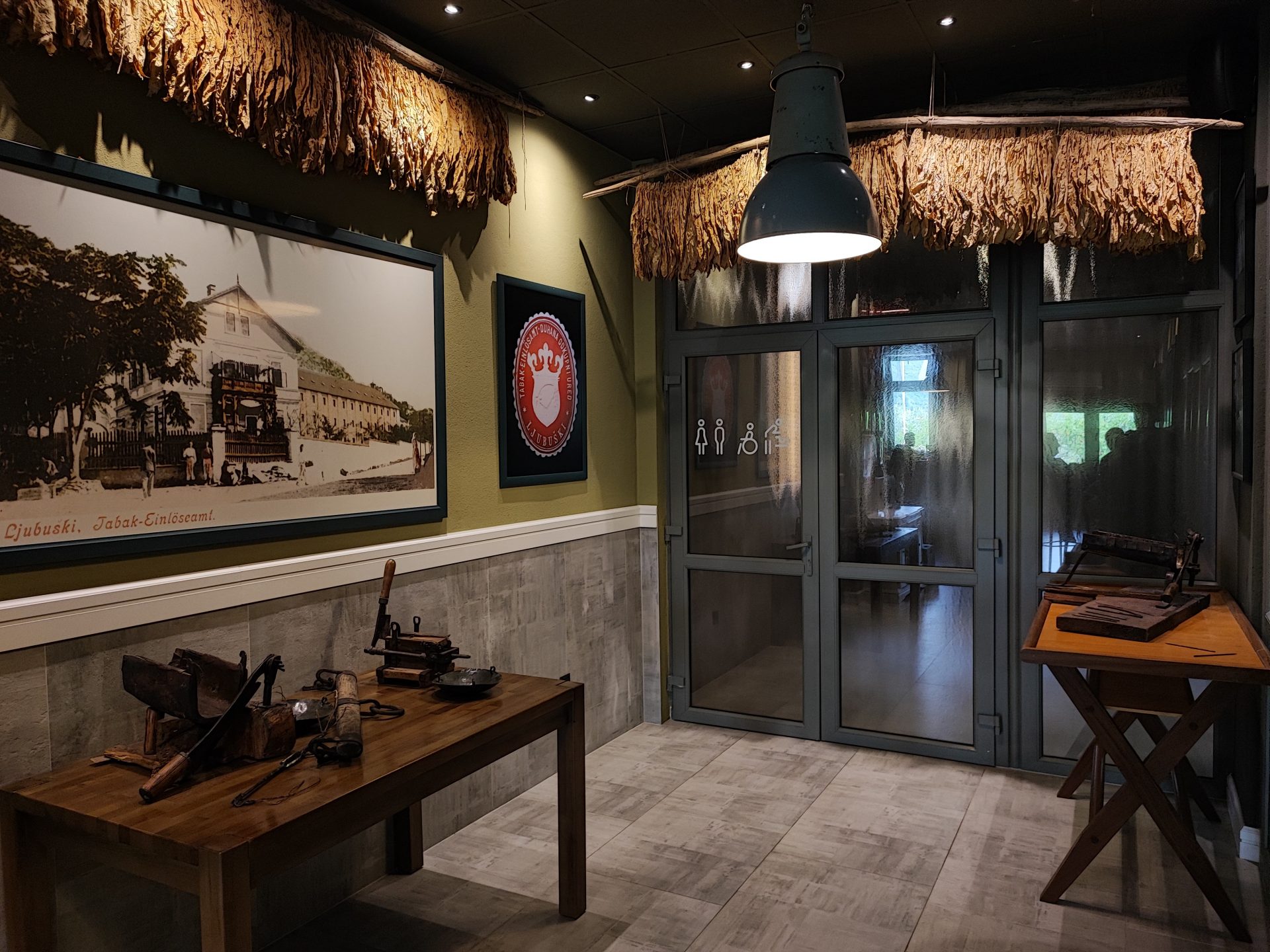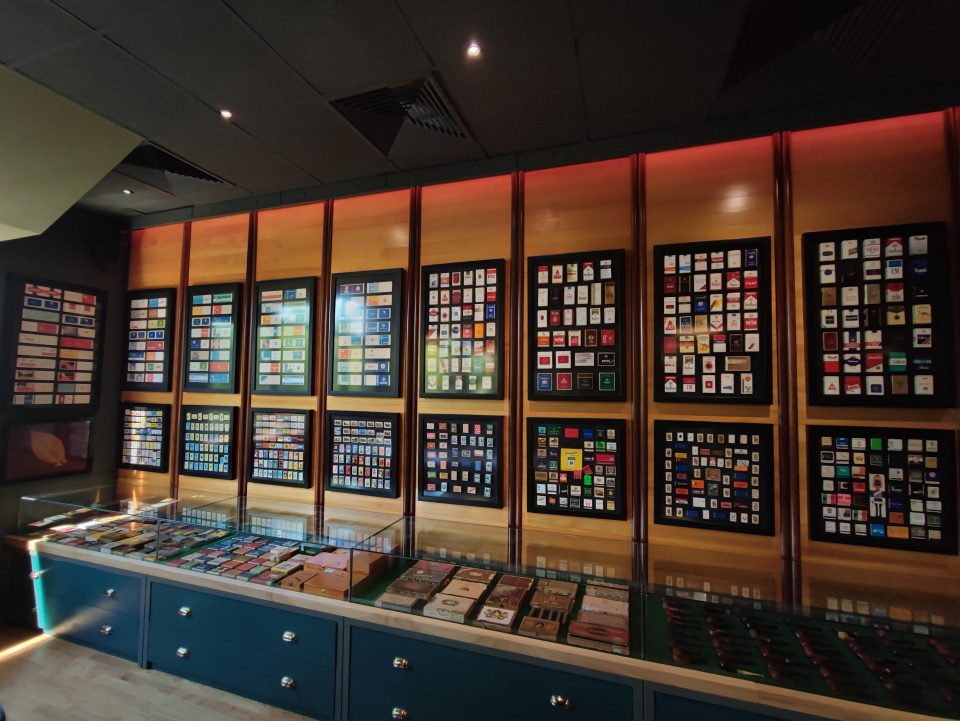
The climate and soil in Herzegovina favor the development of one of the most consumed plants – tobacco, the so-called “yellow gold” which ensured the financial income of numerous Herzegovinian families. While trying to restore the recognition of Herzegovinian tobacco, the memory of the tradition was immortalized by the opening of the Tobacco Museum in Ljubuški.
There is very little or no demand for the type of tobacco grown in Herzegovina from big tobacco giants like BAT, Philip Morris, JTI, and Imperial. This local variety of semi-oriented tobacco was long ago removed from the blend cigarette recipe. This is why private capital has not yet recognized the possibility for profit.
The Federal Agro-Mediterranean Institute of Mostar is trying to revitalize the production of Herzegovinian tobacco, but exclusively as cut tobacco in different packages. This will initially be for the markets in Bosnia and Herzegovina and neighboring countries, but if demand increases, other countries will be considered.
The Institute for Intellectual Property of Bosnia and Herzegovina has issued a decision on the right to the name of origin of the association “Duvan Hercegovački Ravnjak.” However, pending any further developments, those interested in doing so can reflect on the former staple of Herzegovinian identity and the region’s uniqueness by vising the Tobacco Museum in Ljubuški.
The Former Heart of “Yellow-Gold”
Tobacco first appeared in Herzegovina in the 17th century, and with the introduction of a state monopoly by what was then Austria-Hungary, the product’s importance grew as did support for its production. Today, plain Herzegovinian tobacco is a protected product of geographical origin on the list of the World Intellectual Property Organization (WIPO). Tobacco in Herzegovina was the heart of “yellow gold,” and many were fed and educated by growing this plant.
Benjamin Tomić is the owner of the region’s only tobacco museum, which is located in Ljubuški. He explained that growing tobacco used to be a painstaking job because everything was done by hand and entire families took part in growing tobacco. Today, only three tobacco buying stations remain in Bosnia and Herzegovina, and all existing factories have been shut down. The last tobacco buying shop in Herzegovina was closed ten years ago in Stolac.

Marko Ivanković, director of the Federal Agro-Mediterranean Institute in Mostar, said that in 1985, an estimated 1,200 tons of tobacco was purchased in Ljubuški. At the time, this amounted to roughly five million German marks worth; however, in today’s economy, the value would be four or five times more.
“We have no illusions that we will return to pre-war production quantity, but our goal is to produce a premium product, with recognizable quality and tradition in consumption, which will again have a high price,” said Ivanković.
He goes on to explain that the goal is to take matters into their own hands. In simpler terms, this would mean that primary production, processing (cut tobacco and packaging), and market sale would be done by a single company. “Our efforts are aimed at revitalizing the production of Herzegovinian tobacco exclusively as cut tobacco in different packages. In the beginning, we aim to distribute to the market in BiH and neighboring countries, and if demand were to increase, other markets could be considered,” said Ivanković.
Tomić is of the opinion that tobacco production in Bosnia and Herzegovina will never be fully revitalized due to problems with the protection of domestic production, and that it is impossible to compete with tobacco companies that receive equal or better treatment regarding excise duties and taxes on tobacco and tobacco products.
Tobacco is a state monopoly everywhere in the world. It accounts for a significant source of income in state budgets, and its production is strictly regulated at the exclusion of the market forces. However, in Bosnia and Herzegovina, following the post-socialist transition to an open liberal economy, Ivanković says that not all the segments of the production chain are monopolized.
The relationship between the primary producer and the purchase organizer (tobacco stations), as stated by Ivanković, takes place through contracts, but on market principles: “Each year, practically, contracts are signed between the purchase organizer and the primary tobacco producers and contract prices are not influenced by the state. In the former system, the state determined the purchase prices of raw (unfermented) leaf tobacco.”

Individual producers as well as entire countries strive to differentiate their products and regions – that is, the localities on the market – to make them recognizable and competitive. In this context, the Institute for Intellectual Property of BiH states that Herzegovinian tobacco can be one of the recognizable elements of the Herzegovinian identity, which can complete the recognition of Herzegovina as a unique region. “Throughout history, Herzegovinian tobacco has gained a reputation as a quality tobacco that was known beyond the borders of Bosnia and Herzegovina,” the Institute stated.
Herzegovina Tobacco – A Tourist Product
In the project “Revitalization of the Production of Herzegovinian Tobacco,” Herzegovinian tobacco was presented as a tourist product, the sale of which would be exclusively cut tobacco for rolling. Ivanković led the team that created the project, but they were unable to get the support of potential investors. Aware of the fact that the majority of today’s consumers do not know how to roll tobacco, they planned an activity in the project under the working title “Tobacco Rolling School.”
Given that it is a tourist product, Ivanković said that the logical idea was to establish a museum of Herzegovinian tobacco.
In May of this year, a tobacco museum was opened in a former cigarette factory in Ljubuški. This tobacco museum is the only one in the region. The Tabak Restaurant, located within the museum, is filled with antiques, including needles, shredders for cutting tobacco, scales, hooks and strings on which tobacco was hung up to dry, and so on.
Tomić, the owner of the museum, said that after technically equipping the building, they hired the academic sculptor and designer Robert Alilović, who suggested that they collect as many antiques as possible from across the region. “For months we contacted collectors throughout the region – in BiH, Croatia, Serbia, Slovenia, Montenegro – searched classified ads, registered on portals where antique auctions are held, etc. We bought everything that was on sale, and now we have a collection that we think is impossible for anyone to replicate,” Tomić said.

He says that they have tried to collect artifacts from the Austria-Hungarian period up until the present day items. “We have exhibited antiques from the time of Austria-Hungary, the Independent State of Croatia, the Kingdom of Yugoslavia, and up to the present day. Along the way, we also touched on the world history of tobacco, such as famous world consumers of tobacco and tobacco products, former global advertisements for various tobacco products from when tobacco was not yet considered a product that is harmful to health. We also touched on Cuba, that is, advertisements for Cuban cigars, etc.,” Tomić described.
The first attempt to open a tobacco museum dates back to 1989, when the Mostar Tobacco Factory bought a collection of antiques with the aim of building a museum within the factory. However, the collection was destroyed in the war and the museum was neer created. The second attempt to open a museum, according to Tomić, was by the Federal Agro-Mediterranean Institute Mostar, but he is not sure why the idea never came to fruition.






